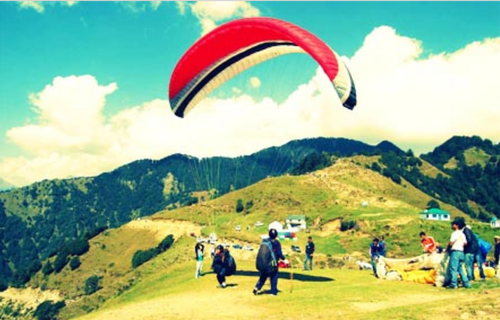Paragliding is an exhilarating adventure sport that allows you to soar through the skies and enjoy breathtaking views. However, like any extreme sport, it comes with its own set of risks. Ensuring safety before, during, and after your flight is crucial to having a smooth and enjoyable experience. Whether you are a beginner or an experienced paraglider, here are the essential safety measures you need to know.
1. Choose a Certified Instructor and Operator
- Always fly with a certified and experienced pilot if you are opting for a tandem flight.
- If you are training, ensure you choose a reputed school that follows safety guidelines and regulations.
- Check for accreditations from organizations like the Paragliding World Cup Association (PWCA) or national aviation authorities.
2. Pre-Flight Safety Checks
- Inspect Your Gear: Ensure that the harness, helmet, glider, and other equipment are in excellent condition.
- Weather Conditions: Check wind speed, air turbulence, and other weather factors before takeoff.
- Communication with Pilot/Instructor: Always discuss the flight plan and emergency protocols before launching.
3. Proper Gear and Equipment
- Helmet: A well-fitted, certified helmet is essential to protect your head.
- Harness: Ensure your harness is secure and comfortable.
- Glider Condition: Check for any wear and tear on the parachute fabric and lines.
- Reserve Parachute: Always carry a reserve parachute for emergencies.
4. Take-Off and Landing Precautions
- Take-Off:
- Run with confidence and avoid sudden stops.
- Maintain a balanced posture and follow the pilot’s instructions.
- Landing:
- Approach the landing zone gradually and maintain proper body posture.
- Keep your legs slightly bent to absorb impact.
5. Avoid Risky Weather Conditions
- Do Not Fly in Stormy or Gusty Winds: High winds and unpredictable weather can cause turbulence, increasing the risk of accidents.
- Check Local Weather Reports: Stay updated on wind patterns, cloud cover, and temperature changes.
- Be Aware of Thermal Currents: Strong thermals can be challenging for inexperienced pilots.
6. Stay Physically and Mentally Prepared
- Physical Fitness: Ensure you are in good health before attempting a flight.
- Mental Readiness: Fear and panic can lead to mistakes; stay calm and confident throughout the experience.
- Hydration and Nutrition: Drink enough water and have a light meal before flying to maintain energy levels.
7. Emergency Protocols
- Know Your Emergency Landing Sites: Be aware of alternate landing zones in case of unexpected issues.
- Use a Radio or GPS Tracker: Helps in case of navigation problems or emergencies.
- Deploy Reserve Parachute if Necessary: In extreme cases, use your backup parachute if you lose control of the main glider.
8. Post-Flight Safety
- Inspect Your Equipment: Check for any damage before storing it.
- Debrief with Your Instructor: Discuss the flight experience and any challenges faced.
- Stretch and Hydrate: Helps in muscle recovery after the adventure.
Conclusion
Paragliding is an incredible adventure, but safety should always be your top priority. By following these precautions, ensuring proper training, and being aware of weather conditions, you can enjoy a safe and thrilling flight. Always choose certified professionals, use high-quality equipment, and stay mentally and physically prepared to make the most of your paragliding experience.

